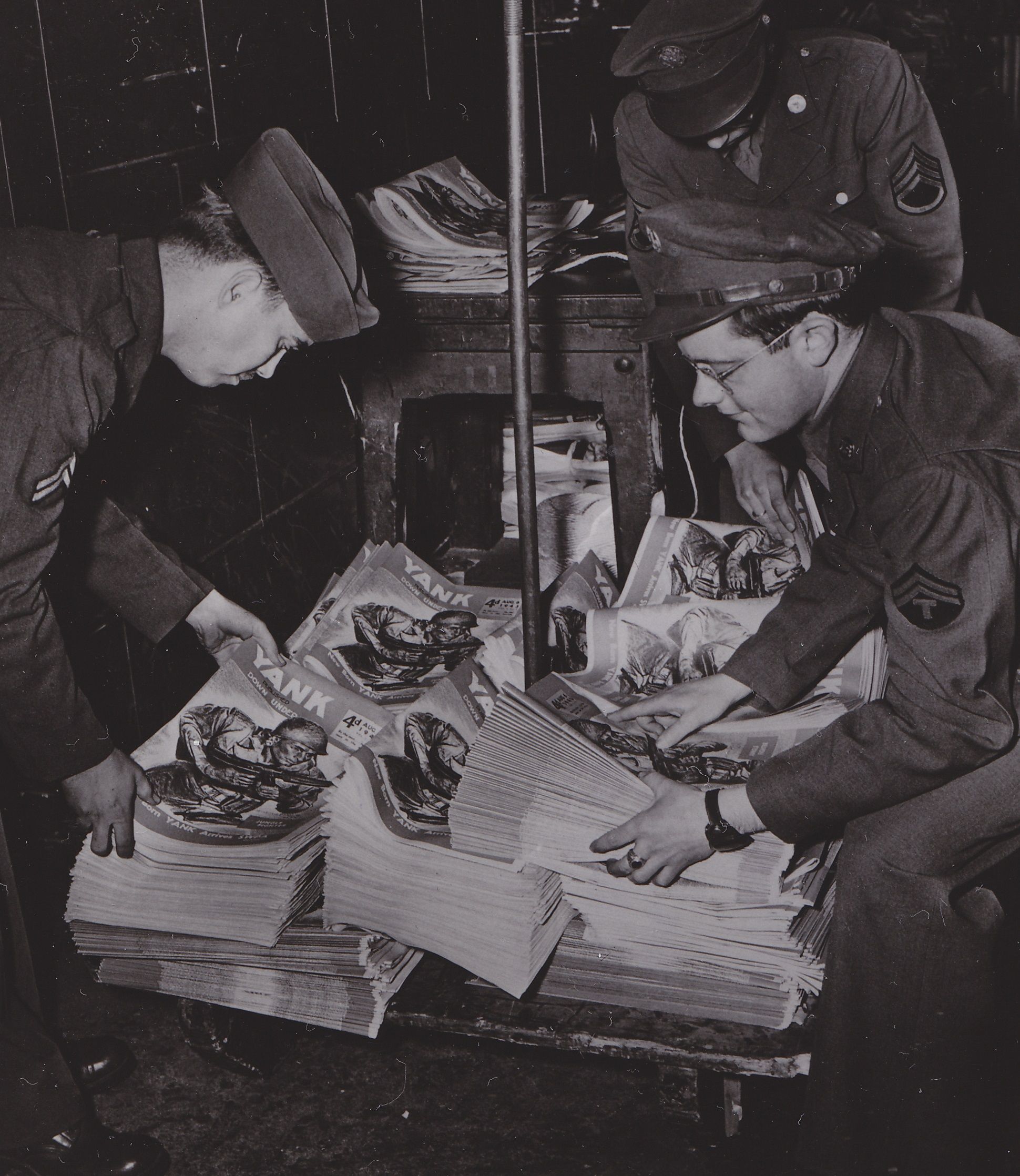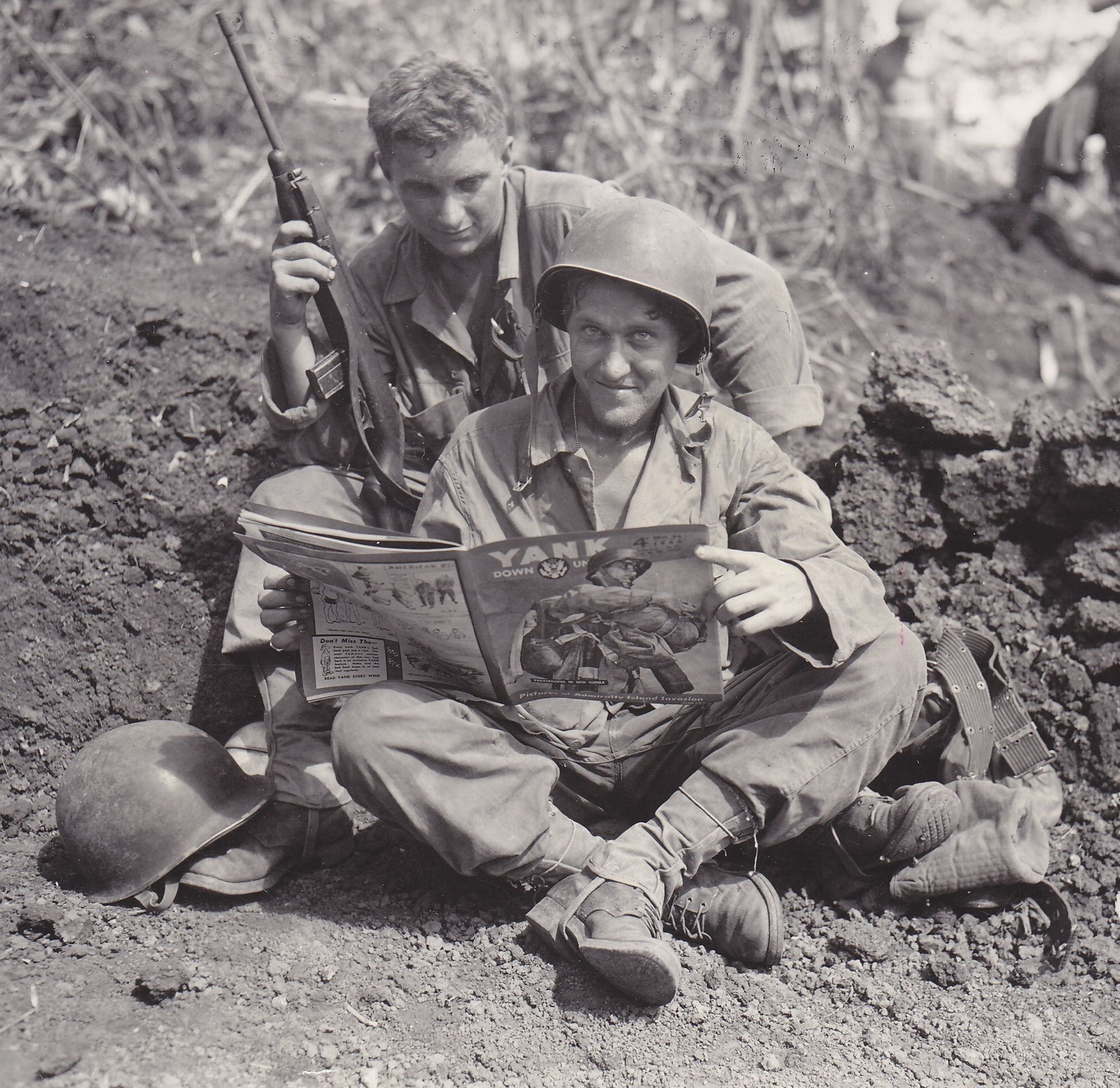YANK was one of the most popular publications of the Second World War and is an invaluable source of research
YANK, the Army Weekly, as one former member of the editorial staff put it, was "the authentic voice of the World War II enlisted man." [1] Written by soldiers, for soldiers, YANK provides an almost bottomless well of perspectives from average American servicemen of the Second World War. [2]
From its first issue, published on June 17, 1942, more than 21 editions in 17 different countries were printed. [3] Initially YANK was only distributed outside of the United States, although that policy was rescinded by the fifth issue overseas consumption made up the majority of its circulation, by June 1945 three out of every four issues was purchased overseas. [4] Also, since YANK was forbidden to be sold to the public it remained a unique part of the serviceman's life. [5]

"YANK enjoys tremendous popularity with GI's everywhere"
Each issue of YANK included news from the home front and sports, cartoons like Sgt. George Baker's "The Sad Sack", stories on battles or combat, "Mail Call" where soldiers could write in with their questions and complaints, and a full page pin-up (usually a popular movie starlet). In 1945 the Army surveyed soldiers in all theaters and asked them what parts of YANK they liked best. The results showed not only what features the soldiers liked the most ("The Sad Sack" being the clear favorite), but also concluded:
YANK enjoys tremendous popularity with GI's everywhere. This conclusion is supported not merely by the fact that the men say they like the magazine. It is supported by the nickels, francs, liras and rupees they plunk down to buy it. [6]

While YANK was sold for 5 cents per issue, half the price of other major weekly publications at the time and enough to net the War Department more than $1,000,000 in profit, issues of YANK were distributed directly to combat units free of charge along with other vital supplies. [7] An example of how YANK was sent up to the front lines in the U.S. Fifth Army area in Italy is illustrative:
Trucks carried copies to the Fifth Army headquarters, where they were broken down into bundles for divisions, then regiments, then battalions, and, finally, shipped to the front lines, along with rations and ammunition. As in the case of all combat areas, the usual five-cent charge was waived . . . [8]

At it's peak more than 2,000,000 copies of YANK were published each week. [9] By the time the last issue was published on December 28, 1945, YANK could rightly be described as the first global periodical. [10]
Available for Free and for Purchase
The entire catalog of YANK editions, organized by issue and text searchable is available here, while legible, admittedly the overall quality of the scans leaves a bit to be desired. [11] For a small price, a CD-ROM of every issue of YANK in pdf. format can be purchased from sellers on Amazon and eBay.

Footnotes
[1] Barrett McGurn, Reporting the Greatest Generation, (Golden, CO : Fulcrum Publishing, 2004), 79.
[2] Although some officers were involved with the management and overseeing of YANK, all of its staff members, including editors, writers, illustrators, and photographers were enlisted men, and the publication maintained a bias towards the lower ranks. Combat medic William Shinji Tsuchida told his parents that he and his buddies thought that YANK was "tops," and he enjoyed how the writers "even tell the officers to go to hell sometimes." Foster, Renita. “'Yank' Magazine Energized Soldiers, Reminding Them of the Reasons for Fighting.” www.army.mil, August 20, 2009. https://www.army.mil/article/26343/yank_magazine_energized_soldiers_reminding_them_of_the_reasons_for_fighting; William Shinji Tsuchida, Wear It Proudly: Letters by William Shinji Tsuchida (Berkeley, CA : Univ. of California Press, 1947), 9.
[3] McGurn, Reporting the Greatest Generation, viii.
[4] Ibid., 83; War Department, What the Soldier Thinks. Number 14, Washington, D.C. : War Department, June 4, 1945, https://www.marshallfoundation.org/library/digital-archive/soldier-thinks-vol-14/ (accessed May 6, 2020).
[5] McGurn, Reporting the Greatest Generation, 83.
[6] What the Soldier Thinks, 4.
[7] McGurn, Reporting the Greatest Generation, 73-74.
[8] Ibid., 163-64.
[9] Ibid., 162.
[10] Ibid., 250.
[11] The YANK catalog is hosted for free by the UNZ Review, a website founded by Ron Unz. Unz and the UNZ Review have been criticized by the Anti-Defamation League for supporting anti-Semitic rhetoric. “Ron Unz: Controversial Writer and Funder of Anti-Israel Activists.” Anti-Defamation League, January 20, 2014. https://www.adl.org/news/article/ron-unz-controversial-writer-and-funder-of-anti-israel-activists?_ga=2.58258152.391319979.1588760411-2100231086.1588760411.
The author does not endorse or condone any content on the UNZ Review, merely identifies it as a source for the YANK catalog online.